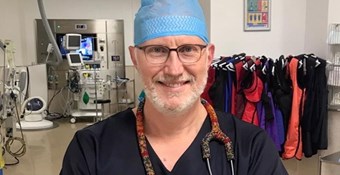The Good Morning Breakfast
Dit kan dalk 'n great idee wees!─── 14:54 Thu, 21 Aug 2014


Scientists found last May that injecting old mice with the blood of young mice seemed to reverse the aging process, the older mice displaying vast improvements in both physical and mental performance.
These findings have been tested several times since then, and the researchers are finally ready to begin human trials.
New Scientist reports that starting this October, a team at the Stanford School of Medicine will give volunteers with mild to moderate Alzheimer’s blood plasma donated by people under the age of 30.
Tony Wyss-Coray, the head of the study, said,
Blood might contain the fountain of youth after all. And it is within us all – that’s the crazy thing. It just loses its power as we age.
He cautioned, however, that there is no certainty the results will be the same as those yielded in the animal experiments.
The team is nearly certain mental cognition will improve, they just aren’t sure for how long.
He told New Scientist:
We will assess cognitive function immediately before and for several days after the transfusion, as well as tracking each person for a few months to see if any of their family or carers report any positive effects. The effects might be transient, but even if it’s just for a day it is a proof of concept that is worth pursuing.
Those formerly deteriorating mice are still doing just great, though.
Their fountain of youth was found in a protein called GDF11, which declines with age.
It was this protein that was injected into the aforementioned mice and led to an increase in blood flow, the creation of new blood vessels and most importantly, higher brain activity.
Wyss-Coray is skeptical that the protein alone will have the same effect on humans and will seek to uncover more biological sources of rejuvenation.
He said,
It would be great if we could identify several factors that we could boost in older people. Then we might be able to make a drug that does the same thing. We also want to know what organ in the body produces these factors. If we knew that, maybe we could stimulate that tissue in older people.
This will also allow them to form a medication that can be mass produced as opposed to relying on the right blood constantly being available for donation.
But GDF11 still holds a wide variety of capabilities on its own, as further studies will test its impact on chronic diseases and different types of cancer.
via New Scientist, Photo Credit: Getty Images













